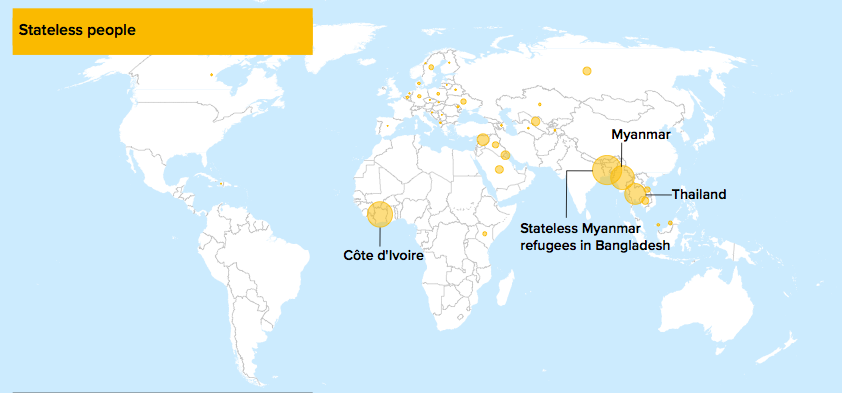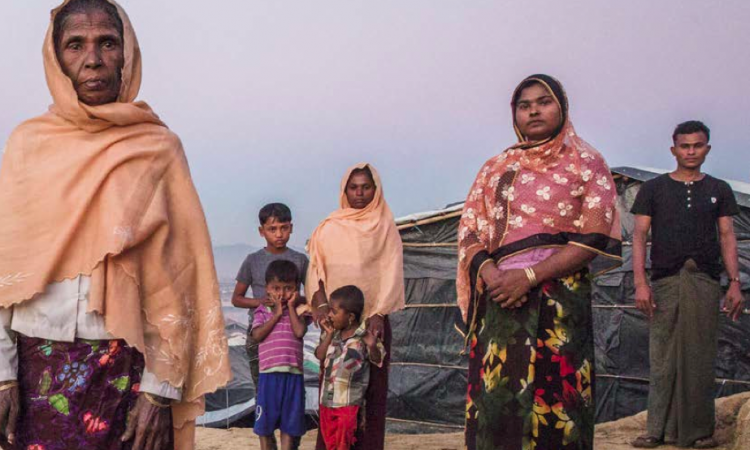The identification of stateless people is key to addressing difficulties they face and to enabling governments, UNHCR, and others to prevent and reduce statelessness. Action 10 of UNHCR’s Global Action Plan to end Statelessness (GAP) and the guiding framework to achieve the goals of UNHCR’s #iBelong Campaign focus on improving quantitative and qualitative data on statelessness. In addition, the establishment of statelessness determination procedures in accordance with Action 6 of the GAP will lead to new data in countries hosting stateless migrants. Strengthening of civil registration and vital-statistics systems in accordance with Action 7 of the GAP also will contribute to the availability of quantitative data. Statistics and information on the situation of stateless populations can also be gathered through population censuses.

When the GAP was published in 2014, 112 out of 142 national population censuses undertaken since 2005 for which the United Nations possessed questionnaires included a question on nationality. Of these, fewer than 25 per cent included a pre-coded option for census takers to record the responses of those who identified themselves as stateless. It is therefore important to include questions relating to nationality in the 2020 round of population and housing censuses. The Conference of European Statisticians Recommendations for the 2020 Censuses of Population and Housing is a first step in this regard, but further efforts are needed. UNHCR operations are collaborating with statisticians and relevant authorities to include questions in upcoming censuses that will assist in identifying the number of stateless people. UNHCR encourages all States to follow these examples.
The table below shows the figures for the ten largest reported stateless populations in the world over the last three years. As can be seen, the mass displacement of stateless Rohingya to Bangladesh and the decision to exceptionally report Rohingya refugees within the statelessness data, has led to Bangladesh being propelled to the top of the list. If the figures for Bangladesh and Myanmar are combined, the total exceeds 1.5 million, which was greater than the number of stateless Rohingya reported in previous years. This is due to also including the long-term displaced Rohingya within Bangladesh and Myanmar in the statistics (who had previously been excluded). However, Rohingya refugees in other countries (India, Malaysia, Pakistan, Saudi Arabia, Thailand etc.) are still not included.
| End of 2017 | End of 2016 | End of 2015 |
| Bangladesh - 932,204 | Myanmar - 925,939 | Myanmar - 938,000 |
| Côte d’Ivoire - 692,000 | Côte d’Ivoire - 694,000 | Côte d’Ivoire - 700,000 |
| Myanmar - 621,763 | Thailand - 487,741 | Thailand - 443,862 |
| Thailand - 486,440 | Latvia - 242,736 | Zimbabwe- 300,000 |
| Latvia - 233,571 | Syrian Arab Republic - 160,000 | Latvia - 252,195 |
| Syrian Arab Republic - 160,000 | Kuwait - 93,000 | Syrian Arab Republic - 160,000 |
| Kuwait - 92,000 | Russian Federation - 90,771 | Dominican Republic - 133,770 |
| Uzbekistan - 85,555 | Uzbekistan - 86,524 | Russian Federation - 101,813 |
| Russian Federation - 82,148 | Estonia - 82,585 | Kuwait - 93,000 |
| Estonia - 80,314 | Saudi Arabia - 70,000 | Uzbekistan - 86,703 |
In terms of other changes to the global statelessness picture in 2017, the table above shows that these are rather minor. As in previous years, we continue to see large-scale statelessness in countries across the world. Côte d’Ivoire, Thailand, Latvia, Syria and Kuwait remain effectively in the same positions in the table – i.e. behind the Rohingya community from Myanmar. The combined tally for these five countries has dropped slightly since the previous year, but only by 0.8% (or 13,466 people). Together, the countries with the ten largest stateless populations for which data has been reported accounted for 77% of the overall number of stateless people who were counted in 2017: 3 million out of 3.9 million.
Two countries which could previously be found among the ten with the largest number of stateless people are Zimbabwe and the Dominican Republic. Last year, the figures reported for both of these countries were removed from the global statistical reporting, leading then to a drop of almost half a million in the total number of stateless persons captured in the global statistics collated by UNHCR. It was explained that new data collection was ongoing in both countries which would lead to the publication of updated figures. This year, while no new data has been reported – footnotes continue to indicate that data collection efforts are ongoing – both countries have been marked with an asterisk (*), rather than a dash (-). This is vitally important because it ensures the acknowledgement, at least, that there is a significant stateless population in the country, but that reliable data is not currently available.
According to data available to UNHCR a total of 56,500 stateless people in 29 countries acquired nationality during 2017. The Global Trends report notes that “significant reductions” occurred in the Philippines, the Russian Federation, Sweden, Tajikistan and Thailand.
However, UNHCR has previously estimated that in the five largest non-refugee statelessness situations alone, 70,000 children are born into statelessness each year. This means that, as was also the case in 2016, the number of new cases of children born stateless was higher than the number of existing cases of statelessness that were resolved. This is before considering the question of how many people were rendered newly stateless during the year.
SOURCES: IOM, UNHCR
IMAGE CREDIT: UNHCR / Andrew McConnell
